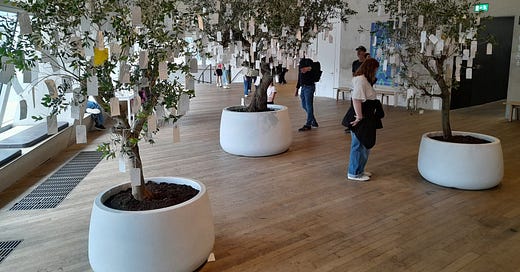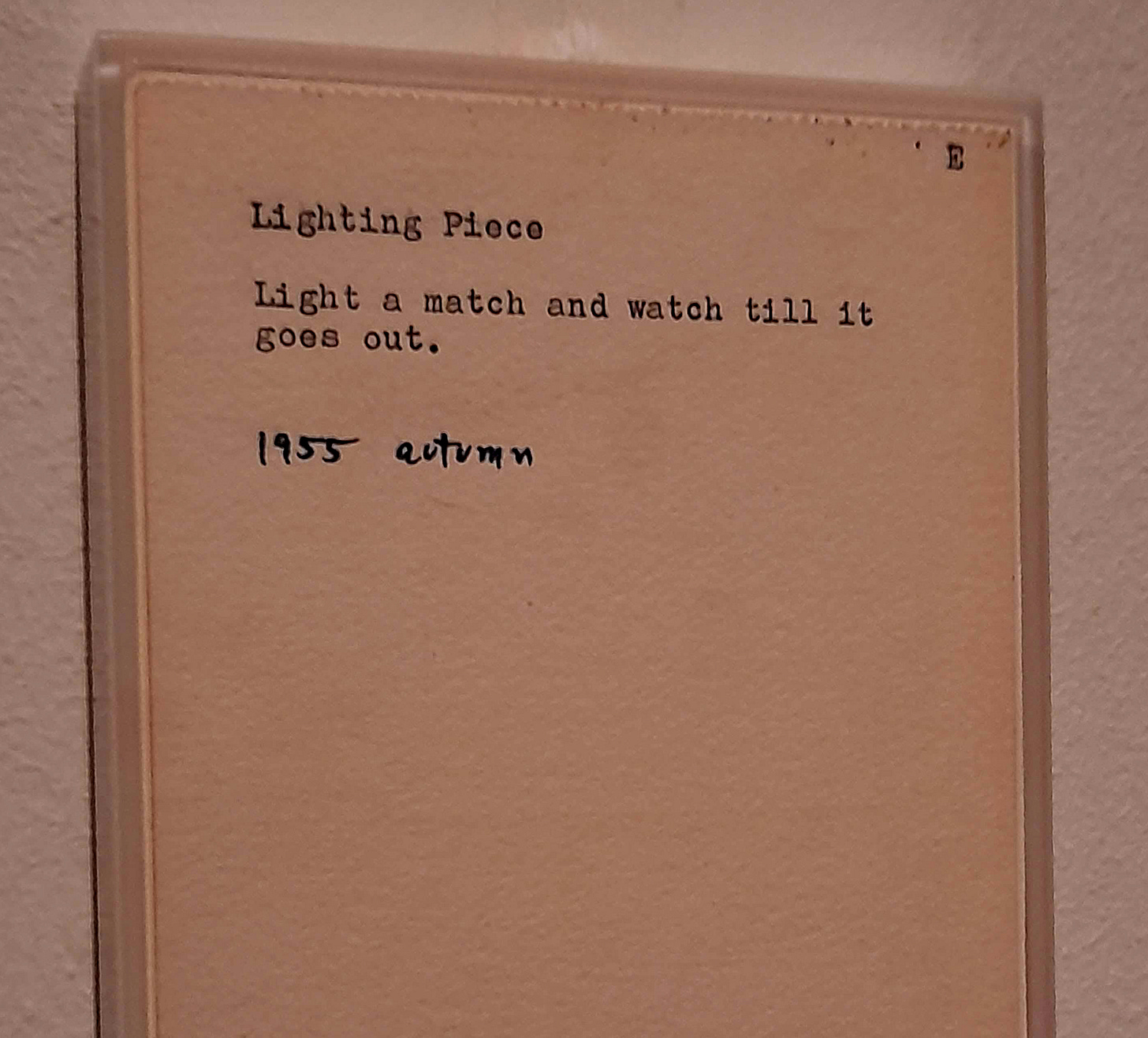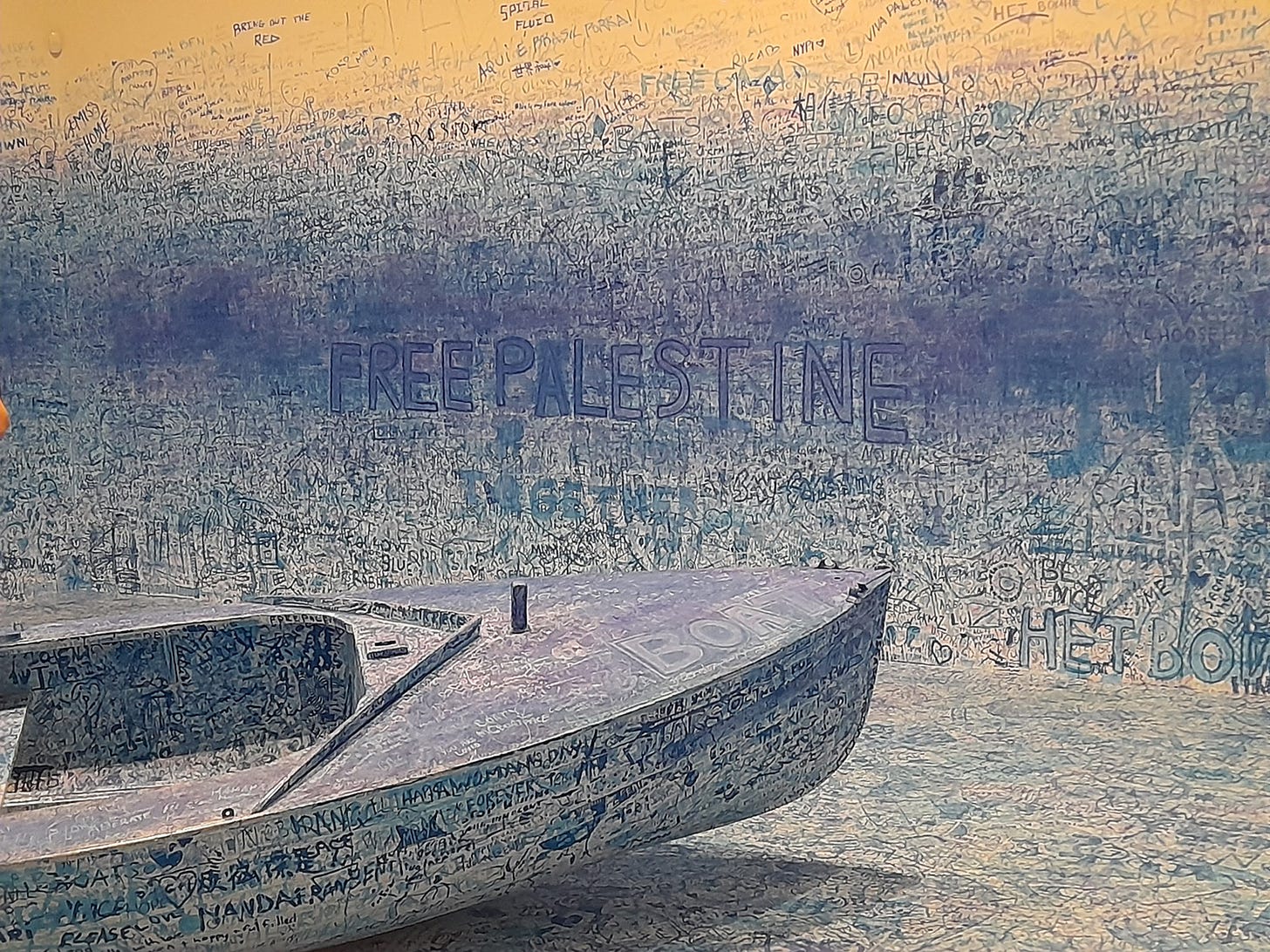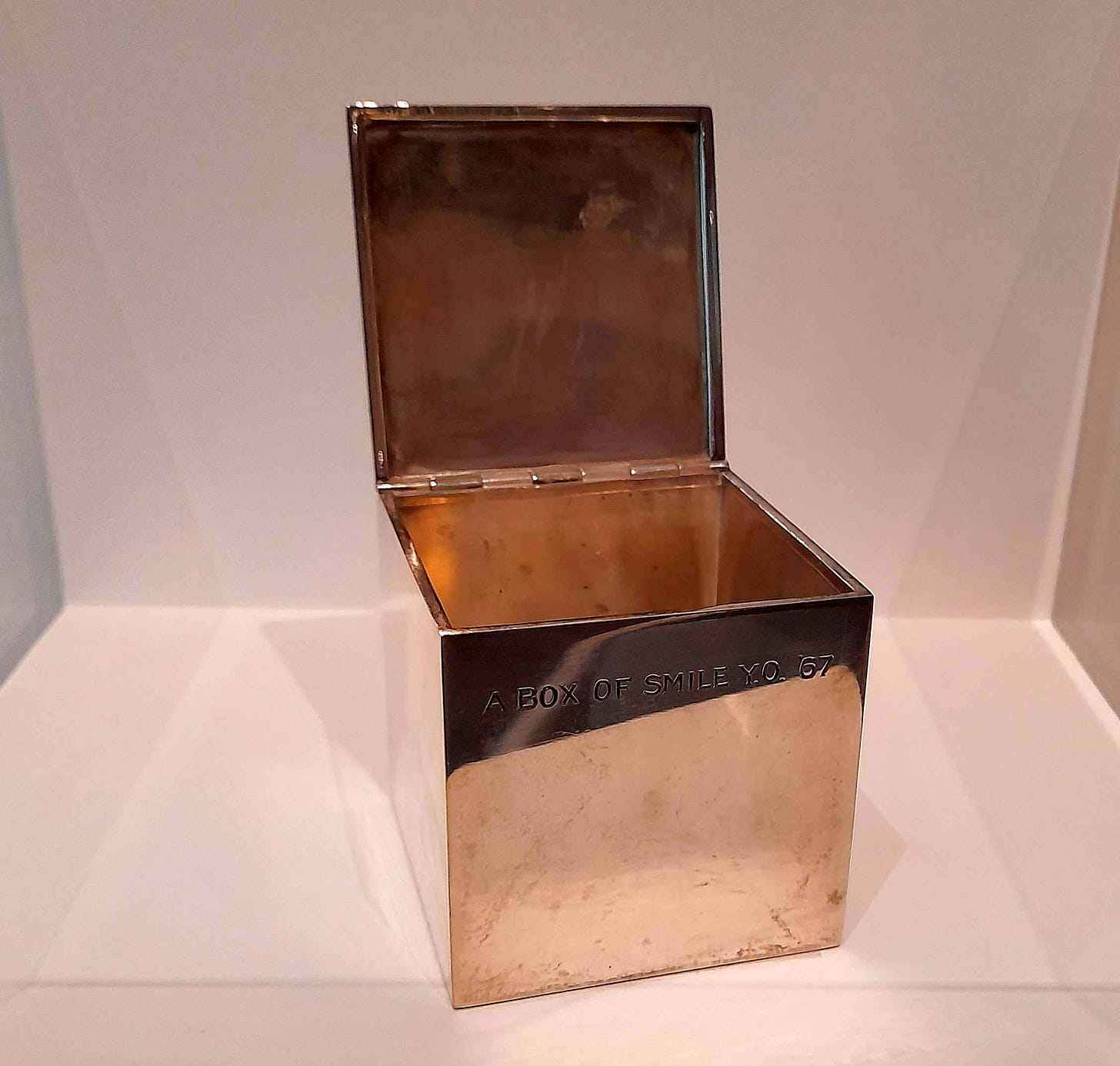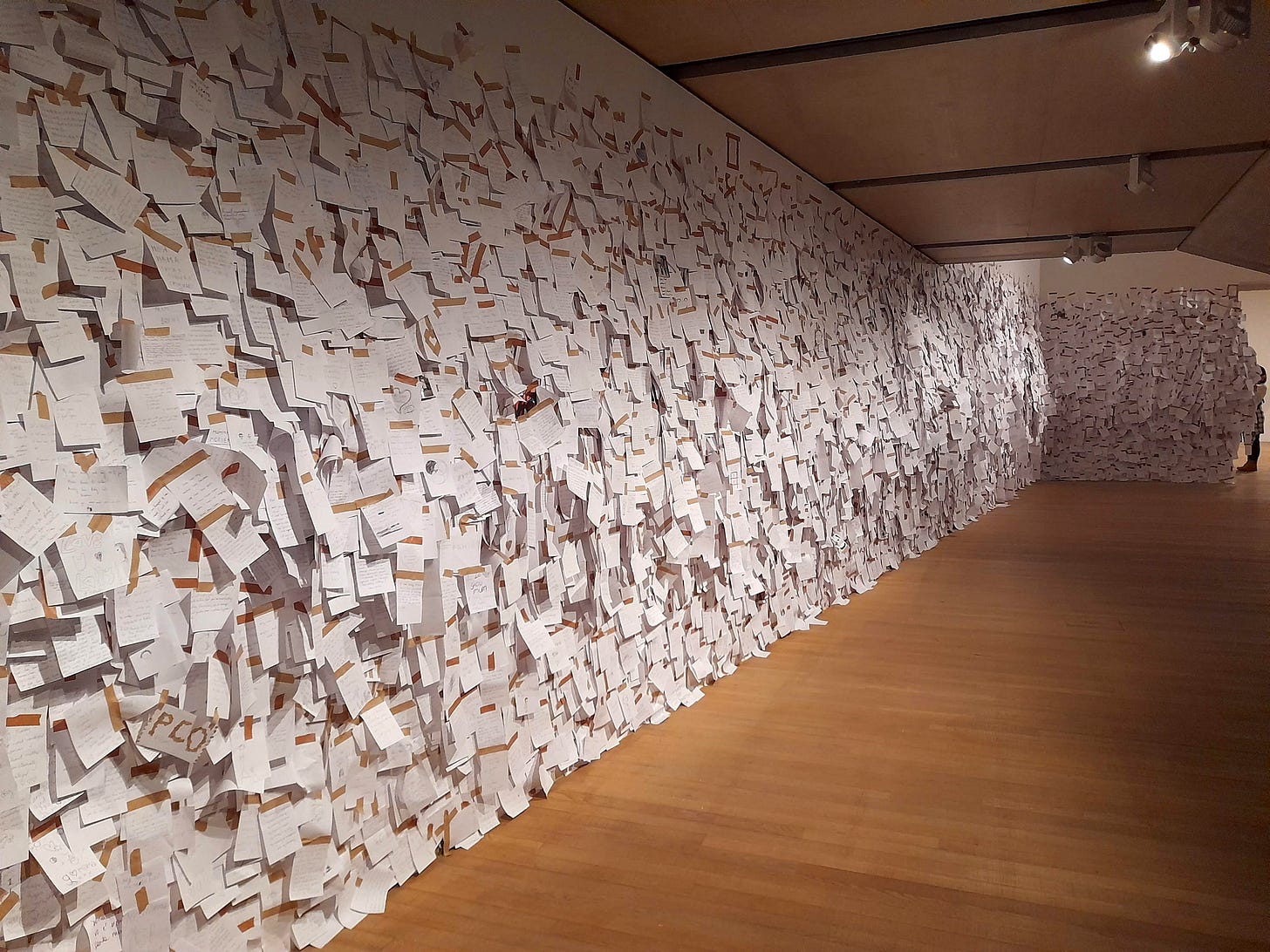What precipitated my whirlwind trip to London last month was a longing to visit the Yoko Ono retrospective exhibition at Tate Modern. As soon as the flight was booked (an overnight only) I was on the Tate website booking my timed ticket for the show. While a specific time for entry was given, one was not hurried through the rooms, so I planned a mid-afternoon ticket that allowed me a couple of hours to look at the work.
As soon as I got off the elevator, I could hear Yoko Ono’s music and even before entering the exhibition several “wish-trees” were encountered along with the invitation, pens, and paper to make your own wish and add it to one of the trees.
From very early on in Ono’s practice, the audience was invited to participate in the artwork. Pages from Ono’s conceptual book, Grapefruit, were on display with simple instructions, in both English and Japanese (the calligraphy for which was beautiful in itself). Lighting piece showed how a simple instruction could be completed as it was a live performance (photographic evidence of this was included) and turned into a mesmerising film, which was shown on one of the gallery walls.
I had not seen images of this participatory work before: once again the audience was invited to contribute to the artwork (yes, that is my hand). A container of nails was nearby as well as a hammer for passersby to vent their own personal frustrations and add to the overall design of the piece. I figured that there was probably a schedule for removal of nails, as there were plenty of holes in the board, and I imagine there are thousands of visitors to the exhibition daily.
I first came across the white chess table when in Berlin in 1992 and was totally amazed at the then thirty year old piece: the simplicity of the idea for peace was so meaningful. Though the chess tables at the Tate are far more fresh than the one I saw in Berlin, the concept is timeless. There are more tables at Tate and the invitation to play “until you forget which are your pieces” is open.
Again, this is a highly interactive piece: markers of different blue hues as well as white are available to the audience to write messages on the walls, floor, or the boat within the room. I was looking forward especially to seeing how this work was faring with the high volume of people passing through — I had seen a video walk-through of the exhibition months ago when it first opened.
This tiny, shiny sculpture is so elegant and personal. Looking into it you see nothing but your own smile reflected in the surface. One can only smile when looking into it — to bring peace and joy through simplicity is something I think Yoko Ono sincerely believes in and this concept underlies everything that she does in her practice.
Once again, the viewer is invited to make a concept a reality: paper, tape, and writing implements are provided with the instruction to write something about your mother.
The exhibition covers Yoko Ono’s career as a multi-disciplinary, avant-garde, and influential artist over the past 7 decades. Along with photographs, films, drawings, and sculptures, there are recreations of work to go with her conceptual instructions. So much of the work draws on the concept of reaching out to fellow humans; interaction and participation are important for understanding. It is an exhibition that is a reminder that love is needed in this world. I’m so glad I had the opportunity to see it and feel a part of it. Thank you, Yoko!

